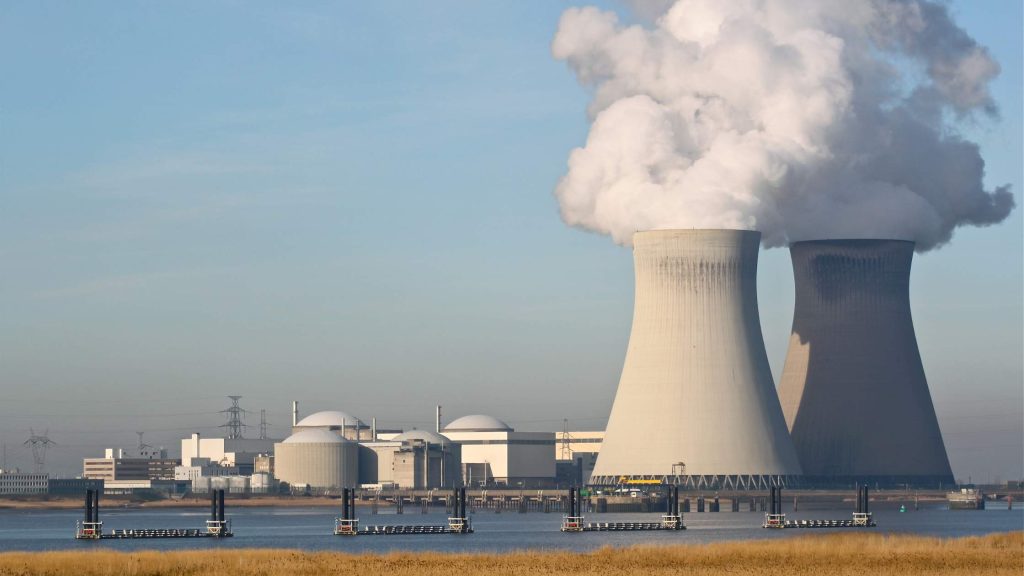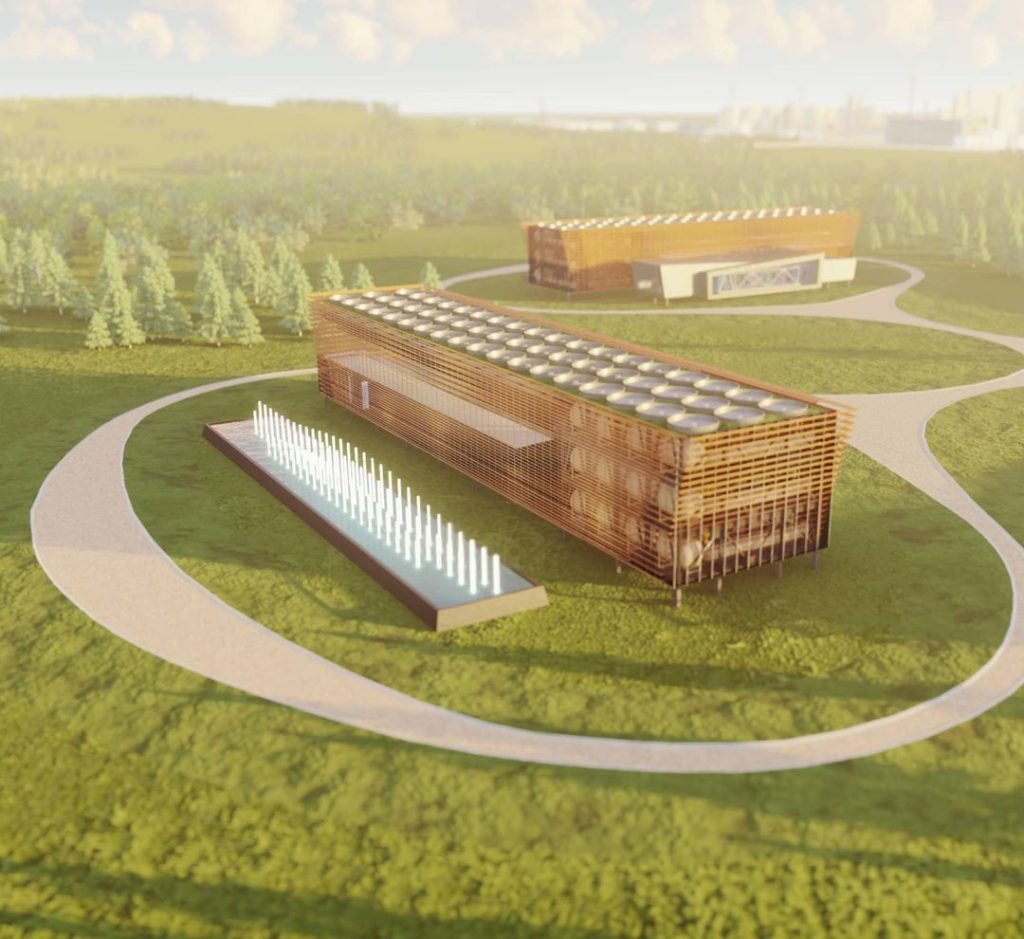Can Nuclear Energy Solve the Data Centre Power Challenge?
Power is one of the most talked about, if not the most talked about, topics in the data centre industry right now.
So much so, that the topic comes up in almost every Inside Data Centre podcast that Andy Davis, director of DataX Connect, records. Listen back to the recent episode: Can Nuclear Energy Solve the Data Centre Power Challenge?
In this article, we’ll discover what the Power Challenge is, the underlying causes of it, and a possible solution with nuclear energy.
Contents
- What is ‘The Power Challenge’?
- Nuclear energy as a solution
- 3 reasons we need to find solutions to power challenge
- Modular nuclear power stations
- Nuclear energy and sustainability
- Changing perceptions about nuclear
- Key challenges for the data centre sector in 2024
- New talent in the data centre industry
What is ‘the Power Challenge’?
The Power Challenge refers to the significant increase in demand in recent years for energy to power data centres. Technology such as Artificial Intelligence (AI) and Machine Learning (ML), both of which have experienced rapid advancements in recent years, have placed enormous demand on data centres and their energy consumption. As cloud applications and other technologies become more complex, they require more power.
According to EEPower, data centre power consumption has been between 6 – 15 kW/rack in the past. In present times, 80% of rack power shipped is closer to 20 – 40 kW/rack, and this figure is expected to more than double to 50 – 100 kW/rack in the future.
Nuclear energy as a solution
As the Power Challenge becomes more problematic for those in the data centre industry, there’s an increased need to speak to experts from other industries to solve this problem, not just those working in data centres.
The data centre sector has much in common with power and energy infrastructure development, it’s just a question of what the energy conversion machine actually is. Power and energy infrastructure converts MMBtus (1 Million British Thermal Units – a thermal unit of measurement for natural gas.) into mWh, then data centre space takes MWh and converts them into Mbs.

3 reasons we need to find solutions to the data centre power challenge
In the world of data centres, innovation is often touted but genuine openness to new ideas can be hard to come by: “The data centre industry loves innovation… as long as its 10 years old”. There are three main reasons why we need to find solutions to the power challenge:
1. Hyperscalers
Hyperscalers, a type of large-scale data centre, are reevaluating their energy consumption strategies and are increasingly contemplating the concept of time-matched power. This means ensuring that renewable power is actually used at the time it was generated.
2. Artificial intelligence
With the rapid growth of AI there is an ever-increasing demand for power. The energy required per rack for AI is an order of magnitude larger. This means that, if even half the hype around AI is true, the data centre sector will be a top ten energy consumer globally.
3. Challenges with grid connections
Delays and cancellations with grid connections are another reason why the power challenge is at the forefront of peoples’ minds at the moment.
Modular nuclear power stations
Last Energy is working towards a solution for the Power Challenge. Their core solution is their business model, with an underlying product that enables it.
Customers have a fixed price and round-the-clock baseload carbon-free power for a given term, typically 10-25 years. The underlying technology is a 20MW pressurised water reactor nuclear power plant (a micro nuclear power plant).
This plant is self-contained, needs refuelling only once every six years, and specific loads can be worked out with customers. The main differentiating feature with Last Energy’s power plant is that it is completely modular (a technique borrowed from the data centre space) and the entire plant is delivered in 12 x 12 x 48 steel framed modules.
The modular aspect of this type of power plant means that it can be built wherever its needed. A number of challenges in the data centre industry are based on geography; the availability of power locally can be a major restriction in certain locations.
The modular nature minimises schedule and schedule risk. Nuclear in general doesn’t require local input, unlike solar, wind, gas, and biomass which all require feedstock. Last Energy made the design choice to use air cooling, thin fan heat exchangers, to avoid the need for a large cooling tower.

Nuclear energy and sustainability
How sustainable is nuclear energy? The sceptics will say: not very. As demand increases, how will nuclear cope?
Locality
Firstly, there are no local resource constraints with the use of nuclear energy. When building a solar or wind farm, for example, a huge amount of resources, time, and money need to go into the location planning. With nuclear energy, there are far fewer location requirements.
Scalability
The sceptics will say that nuclear power isn’t scalable. However nuclear power plant developer Last Energy build modular nuclear power plants that can be scaled with ease.
As Michael Crabb, SVP Commercial, pointed out, if you wanted to scale up a solar farm you wouldn’t knock the current one down and build one massive solar panel, you’d just add more small ones. It works the same way with modular nuclear power plants.
The ability to copy the same thing (in this case, nuclear power plants) many times is what allows scalability in terms of delivery and financing. This will only become more economic in the future. Last Energy acknowledge that they’ll get faster and more efficient each time they complete a project.
Changing perceptions about nuclear
People tend to be siloed in opinions and suggestions when it comes to nuclear power. Perception is one of the biggest challenges faced by the industry.
The data centre industry shares this same challenge. The combination of “we don’t want a data centre built in our backyard” and “we don’t want a nuclear power station built in our backyard” can be a tricky one to manage.
The way around this is for nuclear power plant developers like Last Energy to truly listen to communities to understand their needs and wants. Complaints about the cost and schedule of nuclear power plant construction are usually at the forefront of discussions.
Key challenges for the data centre sector in 2024
There are likely to be more challenges for the data centre sector to navigate in 2024, in addition to the Power Challenge:
- Supply chain constraints
- Possibility of a financial bubble around development platform valuations, similar to the one witnessed with solar energy
- Employers acquiring new talent
New talent in the data centre industry
In addition to the growing demand for power in the data centre space, there’s also concern about a lack of new talent entering the industry. We believe that this is in part because the industry is made to sound more complicated than it actually is.
The technical jargon surrounding data centres can people off, and so data centre professionals need to be mindful of making the industry approachable and giving new talent the progression opportunities they seek.
If you’re looking for talent in the data centre industry, we can help find the people you need. Whether you’re constructing a new data centre or need a team to manage an existing one, our team of talented consultants can help.
Subscribe to the DC Digest
Your fortnightly update on everything going on in the data centre industry, all in one place.
DC Digest
Recent data centre news:
- Weekly Data Centre News – 7th November 2025
- Weekly Data Centre News – 31st October 2025
- Weekly Data Centre News – 24th October 2025
- Weekly Data Centre News – 17th October 2025
- Weekly Data Centre News – 10th October 2025
Other insights
- Articles (43)
- Partnerships (10)
- Research (15)
- Uncategorized (21)
- Update (191)
- USA (9)
Inside Data Centre Podcast
Other insights
-
Is the Data Centre Industry Doing Enough for Women?
We’ve known for a while that a gender imbalance exists in the data centre world. But when only 8% of respondents to our 2025 Data Centre Salary Survey were female – roughly one in twelve – it brought that reality into sharper focus
-
Why Data Centres Are Becoming a Magnet for Young Talent
Young professionals are being presented with the opportunity to be part of a lucrative and rapidly-evolving sector. In our 2025 Data Centre Salary Survey, 1,500 people from around the world shared their compensation packages and feelings towards the sector.
-
2025 Data Centre Salaries
DataX has today, on National Data Centre Day, released the results of its 2025 Data Centre Salary Survey, marking the company’s fifth birthday with its most comprehensive report to date.
-
Shaping Future Talent at UTC Swindon
Activate Learning Education Trust (ALET) are wrapping up the academic year with a series of high-energy Challenge Days, one of which was at UTC Swindon.
-
The Data Centre Power 50
We’re proud to share that Andy Davis, Director at DataX Connect and host of the Inside Data Centre Podcast, has been named in the Datacloud Global Power 50 – a list that recognises 50 of the most influential figures shaping the future of the data center industry.
-
Power, Pricing, and Pipeline: CBRE Report 2025
This article summarises the key takeaways from CBRE’s Global Data Centre Trends 2025 Report, exploring the state of power, inventory, vacancy, absorption, and availability across global markets.
One response to “Can Nuclear Energy Solve the Data Centre Power Challenge? ”
-
Sesli arama SEO SEO danışmanlık hizmeti alarak Google sıralamalarında üst sıralara çıktık. https://www.royalelektrik.com/zafer-elektrikci/
One thought on “Can Nuclear Energy Solve the Data Centre Power Challenge? ”
-
Sesli arama SEO SEO danışmanlık hizmeti alarak Google sıralamalarında üst sıralara çıktık. https://www.royalelektrik.com/zafer-elektrikci/




Leave a Reply